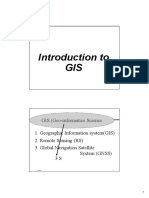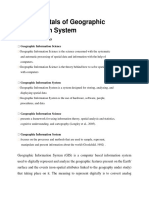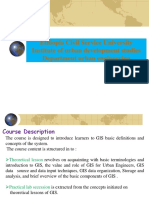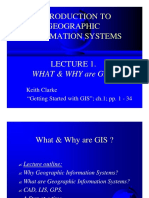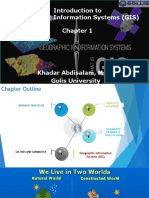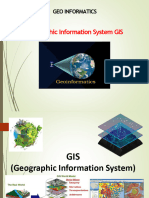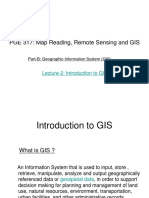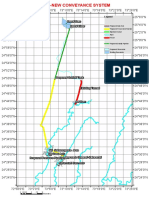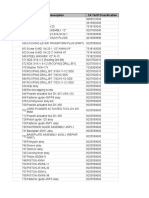0% found this document useful (0 votes)
19 views66 pagesLecture 5 - Introduction To GIS
The document provides an introduction to Geographic Information Systems (GIS) for engineers, covering its fundamental concepts, historical background, importance, components, and applications. It outlines expected outcomes for students, including the ability to define GIS, explain its significance, and identify career opportunities in the field. The material emphasizes the integration of software and data for spatial analysis and decision-making.
Uploaded by
Xander MelidoCopyright
© © All Rights Reserved
We take content rights seriously. If you suspect this is your content, claim it here.
Available Formats
Download as PDF, TXT or read online on Scribd
0% found this document useful (0 votes)
19 views66 pagesLecture 5 - Introduction To GIS
The document provides an introduction to Geographic Information Systems (GIS) for engineers, covering its fundamental concepts, historical background, importance, components, and applications. It outlines expected outcomes for students, including the ability to define GIS, explain its significance, and identify career opportunities in the field. The material emphasizes the integration of software and data for spatial analysis and decision-making.
Uploaded by
Xander MelidoCopyright
© © All Rights Reserved
We take content rights seriously. If you suspect this is your content, claim it here.
Available Formats
Download as PDF, TXT or read online on Scribd
/ 66























